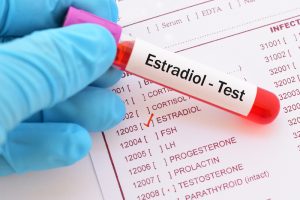The results of estradiol tests could play an important role in establishing a woman’s fertility level, therefore it´s important to know about the functions of the hormone.
What is Estradiol?
Estradiol, also scientifically classified as E2, is a type of estrogen. Estrogen is the primary female reproductive and sexual hormone, which is responsible for the health and growth of organs within the reproductive tract and plays a major part in fostering a woman’s ability to conceive. This hormone is mainly produced inside the ovaries, but is also synthesized by other hormonal glands and organs.
Estradiol executes several pertinent functions in both men and women. In women, the substance performs a significant role in stimulating the growth of reproductive structures like the fallopian tubes, uterus and vaginal region, fostering breast growth, and regulating sexual and reproductive functions. In men, the substance helps to promote sperm health and longevity.
Medical Testing
Doctors might order and perform the E2 test, which measures blood concentrations of the hormone.
The exam is performed at a physician’s office, hospital, or medical clinic. Prior to administration, individuals might be asked to refrain from using certain medications. Common drugs that could skew the results include antibiotics, birth control pills, certain kinds of steroids, various hormonal supplements and some drugs designed to treat mental health problems.
That said, test recipients should not automatically stop taking prescribed medications in advance of the test. Such decisions should be made only after close consultation with and approval from a healthcare professional.
Those undergoing the E2 examination are required to produce a blood sample. A doctor will gather the sample by using a needle to administer a shot into a recipient’s vein. Individuals might feel slight pain or tingling at the injection site. However, such discomfort is typically short-lived and does not precipitate any lasting pain or scarring.
Reasons the Test Is Ordered

Normal Ranges
What is considered normal might vary depending upon certain factors including the recipient’s age, gender, and the presence of any underlying ailments. That said, typical readings for men range from 10 to 50 pg per mL. Normal readings in women depend on whether she is pre- or postmenopausal. In premenopausal subjects, usual findings range between 30 and 400 pg per mL. The results for postmenopausal women should be anywhere from 0 to 30 pg per mL.
What Can Abnormal Results Indicate?
Elevated or increased systemic concentrations of the hormone could indicate the presence of conditions like early onset or delayed puberty, disturbed menstrual cycles, diminished reproductive system function, potential presence of certain serious illnesses like cancer, or various genetic disorders.
Therapeutic Measures
Specific treatment options will be dictated by the specific underlying cause of the abnormal concentration, as well as the condition’s severity. That said, estrogen regulation can be remedied using a variety of natural techniques (exercise, ingestion of hormone-regulating substances, dietary and other lifestyle alterations, and the reduction of stress). When systemic hormonal concentrations are too low, hormone replacement therapy can be administered.




